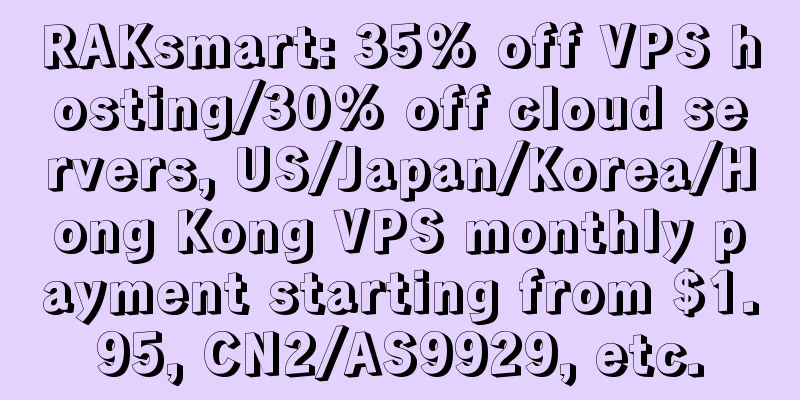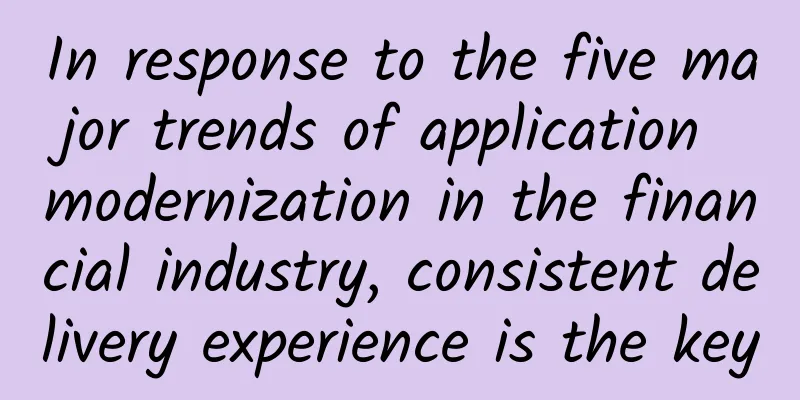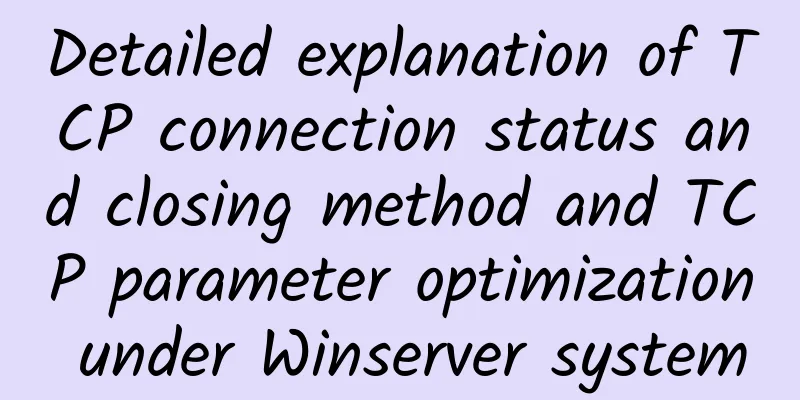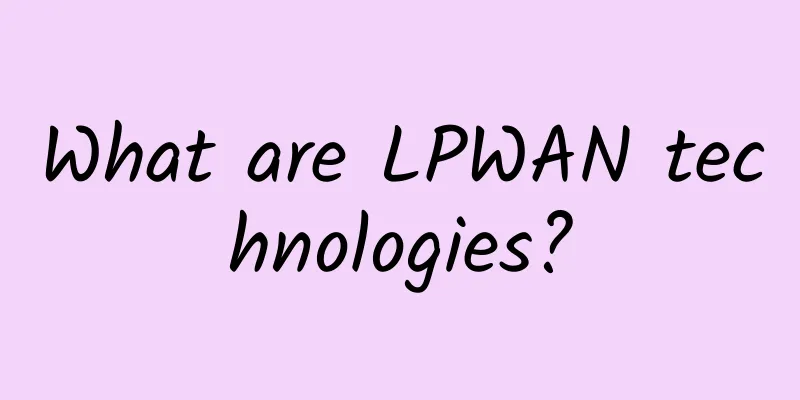Juniper Networks helps you achieve win-win in the era of enterprise multi-cloud

|
[Original article from 51CTO.com] Cloud computing as an IT infrastructure has begun to be widely deployed in enterprises. Its form has also begun to shift from the early relatively single public cloud, private cloud and hybrid cloud to a state of multi-cloud coexistence. According to the 2019 cloud market survey report released by RightScale, more than half of enterprises will deploy multi-cloud solutions. In addition, according to IDC statistics, hardware sales from cloud infrastructure have surpassed traditional hardware revenue in the third quarter of 2018. There is no doubt that the multi-cloud era is coming, and more and more enterprises need to migrate from traditional cloud architecture to multi-cloud architecture. Multi-cloud provides enterprises with greater flexibility and creates better value, but it also brings many challenges to enterprise IT management. The extension and interconnection of services between multiple clouds have become technical difficulties that need to be considered and broken through in the design of enterprise multi-cloud architecture. As a long-established network and security service provider, Juniper Networks provides enterprises with innovative multi-cloud management solutions to help them cope with challenges and win together in the multi-cloud era. Redefining multi-cloud solution architecture from a network perspective From a traditional product perspective, cloud infrastructure can be divided into three layers: basic hardware, virtualization software, and cloud management. Basic hardware includes network, computing, storage, and security devices, virtualization software is the virtualization layer of the above products, and cloud management is the management layer superimposed on these layers. Traditional multi-cloud solutions emphasize the unified management of cloud infrastructure, while Juniper Networks has redefined the architecture of multi-cloud solutions from a network perspective. In Juniper Networks' multi-cloud solutions, the system divides the data center infrastructure into connectivity, orchestration, visualization, and security from a functional perspective. The specific hierarchical relationship is shown in the following figure: Figure 1 Division of cloud management solution levels ◆Connection is the basic service layer, including basic network devices and virtualized network layer, which is composed of various hardware and virtualized network devices, providing basic connections within and between data centers. At this layer, Juniper Networks not only provides users with a series of routing, switching and security products, but also provides NFV products for virtualized environments, such as vMX, vSRX and vQFX, to help users achieve basic connections. ◆Orchestration is the service provision layer, which is the unified scheduling and management of software and hardware systems, and uses orchestration to provide service automation. Service orchestration is implemented by Contrail Networking. Contrail Networking can achieve unified service orchestration in physical and virtualized environments, and can also achieve unified management of networks in physical and virtualized environments. ◆Visualization provides an overview of all services involved in the data center from the perspective of system management, provides managers with basic data on system operation, and provides an interface for the delivery of services. In terms of visualization, the AppFormix component of the Juniper Networks Contrail solution provides visualization at the application level, while the Healthbot component provides visualization at the network level. ◆ Security is the basic business that runs through the above three aspects. Corresponding services are provided at each level to systematically ensure the security of the business. Regarding network security, Juniper Networks provides Contrail Security to solve the security and unified management of security in virtualized environments, and uses SRX and vSRX security gateways to provide protection for security boundaries in physical and virtualized environments. Use the JATP series of products to provide unified management of unknown threats. Juniper Networks' perspective layers services in a multi-cloud architecture from a network perspective and abstracts the essence of the business, making it easier for business managers and service providers to deploy corresponding services as needed, simplifying the complexity of decision-making and reducing the difficulty of solution development. More than just a network, Juniper Networks cloud platform service layer supports Juniper Networks provides a complete multi-cloud solution at the network level from multiple levels such as security, visibility, orchestration and connectivity. However, the network is only part of the data center, and a complete data center solution needs to include more content. As shown in Figure 2, the infrastructure of the data center can be divided from top to bottom into the application service layer, cloud platform service layer, network service layer and infrastructure layer. Figure 2 Juniper Networks Cloud Platform Service Layer Positioning The application service layer is the application software, and the infrastructure layer is the infrastructure of the computer room. These two layers are not closely related to IT infrastructure equipment manufacturers. The network service layer is the traditional positioning of network equipment manufacturers. Juniper Networks provides QFX and EX series Ethernet switch products and corresponding various architecture solutions. The cloud platform service layer is traditionally the position of software vendors, but recently network equipment vendors are not satisfied with the positioning of the network service layer and have entered the cloud platform service layer to provide cloud platform solutions based on SDN controllers. There are currently many solutions to choose from in this layer. VMware, OpenStack and OpenShift represent private protocol virtualization solutions, open source virtualization solutions and container solutions respectively. In addition, some network vendors and server vendors provide various SDN controller solutions. For the cloud platform service layer, Juniper Networks provides an enterprise multi-cloud management solution, namely the Contrail Enterprise Multi-cloud (CEM) suite, which includes components such as Contrail Command, Contrail Networking, Contrail Security, AppFormix and Healthbot. The advantage of this suite is that it can interoperate with the typical solutions mentioned above, that is, it can be seamlessly integrated into environments such as VMware, Openstack and OpenShift to provide network-level services. The CEM suite can also be deployed as a primary device, integrating SDN solutions from other manufacturers, and using a unified network management portal to achieve integrated management of multi-cloud environments. In a multi-cloud environment, data centers are not just private clouds, but also public clouds distributed across cloud operators. These clouds need to be interconnected and managed in a unified manner with customer-built data centers/clouds. For this scenario, Juniper Networks' multi-cloud management solution can complement the solutions of partners to form a complete scenario coverage. Juniper Networks has network and security solutions for data center IT infrastructure, which can meet the needs of internal and edge connections in data centers, and can meet the needs of data center IT infrastructure by cooperating with partners' storage, computing, infrastructure and other related products. On the other hand, for the Cloud Management Platform in multi-cloud management, Juniper Networks' CEM solution provides multi-cloud management at the network level, which can support solutions such as VMware, OpenShift, and Nutanix, and can provide a complete solution by cooperating with the computing and application-oriented cloud management platform provided by partners. In the above solutions, Juniper Networks' philosophy is symbiosis and win-win. The mutual complementation of Juniper Networks and partner solutions can meet customers' growing demand for solutions. The cooperation between the two can promote the common development of Juniper Networks and partners' businesses, which is conducive to launching solutions that are more suitable for customer applications. Juniper Networks multi-cloud solutions are designed with simplicity, openness, and elasticity in mind In the multi-cloud era, competition between vendors has shifted from the original solution competition to the ecosystem competition. In this new environment, Juniper Networks provides an enterprise multi-cloud solution (Contrail Enterprise Multi-Cloud) based on Contrail, using the design concept of simplicity, openness and flexibility. This solution is not a simple product collection or a single solution, but a thought and concept. It includes many components to uniformly manage the enterprise's multi-cloud environment from the perspectives of visualization, orchestration, management, and security to meet the business needs of enterprise customers in the new environment. At the same time, the solution is fully open and compatible with typical cloud management solutions in the industry, meeting customers' needs for solution diversity and unified management. In addition, by using open interfaces and the open source Contrail Networking controller (Tungsten Fabric), cloud business integration service partners can complete secondary development for CEM to meet customers' specific business needs. [51CTO original article, please indicate the original author and source as 51CTO.com when reprinting on partner sites] |
<<: Juniper Networks' SD-WAN as a Service Reshapes Enterprise Branch Networks
>>: Comparison of several mainstream wireless technologies in the Industrial Internet of Things
Recommend
Huawei's Hu Houkun: Make Hongmeng and Euler into important social resources
On November 20, the 2021 China 5G+ Industrial Int...
The End of 2G and 3G Networks: The Transition to 4G and Beyond
As technology evolves and big data becomes more p...
Dissecting an HTTP POST request incident
Author: Wei Ling, vivo Internet Server Team This ...
Ministry of Industry and Information Technology: The number of cellular IoT terminal users of the three major operators is nearly 1.2 billion
According to the "Economic Operation of the ...
HostXen offers 50 yuan for registration, 50 yuan for old users who charge 300 yuan, and 6G memory packages for the United States/Japan/Hong Kong start from 70 yuan
HostXen is a Chinese hosting provider founded in ...
Energy consumption transformation issues of traditional IDC in the 5G era
[[387217]] In the modern society where technology...
Step-by-step analysis: How to write a data analysis report?
[51CTO.com Quick Translation] As a data analyst, ...
BudgetVM: $29/month - 4GB/200GB/100Mbps unlimited traffic/high security/Los Angeles & Japan data centers
It has been exactly one year since I last shared ...
F5 Distributed Cloud WAAP helps enterprises effectively defend against robot attacks with leading security protection capabilities
Today's applications have become an important...
Kvmla Japan Tokyo Softbank VPS promotion 20% off, top up 500 yuan and get 100 yuan
Kvmla, a long-established Chinese VPS hosting com...
How much do you know about the development of Wi-Fi?
As someone who uses Wi-Fi every day, have you eve...
Wi-Fi 7 is on the way, how powerful is it?
In 2019, Samsung and Apple were the first to intr...
SD-WAN & SASE market grew 30%, but what are the challenges behind it?
According to the latest "SASE & SD-WAN &...
How can enterprises fully leverage the potential of private 5G networks?
It may take some time for 5G to become the most a...
China Mobile and Radio and Television Announce Four Major Agreement Details on 5G Co-construction and Sharing
On January 26, China Mobile and China Broadcastin...









